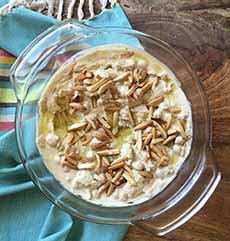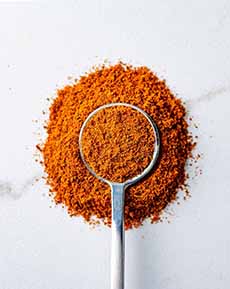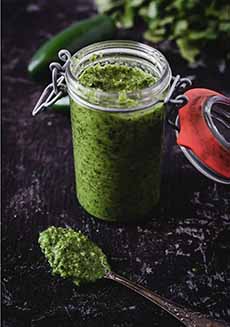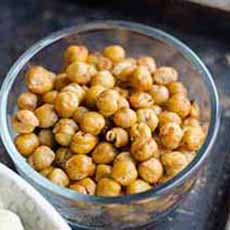Fattet Hummus Recipe For International Hummus Day
|
|
May 13th is International Hummus Day, and we decided we wanted to try something new. So we turned to Hannah Kaminsky’s recipe for Fattet Hummus—a dish we hadn’t heard of until we read it on her Bittersweet Blog. “Consider it the Levantine equivalent of chilaquiles,” says Hannah. Fattet translates to “crumbs,” and is the base word for fattoush salad, which uses the same pieces of crispy pita, but mixed with vegetables and vinaigrette. “Made with toasted pita wedges instead of tortillas and with deconstructed hummus instead of salsa, it’s a socially acceptable way to eat hummus by the spoonful, with no expectations of sharing. “Myriad versions exist across the Middle East, just like hummus itself. “Some are described more like a savory pita bread pudding, flooded with yogurt and baked in a casserole dish. Others, such as my own here, use less saucy components to keep the pita more crisp and dry. “This is one of those ‘recipes’ that should be considered more as a suggestion than a rule. There are no wrong answers for either inclusions or amounts.” So we made the recipe last night, as part of a light Meatless Monday dinner, along with a green salad. It was a hit, and can be served at breakfast, lunch, or dinner. Thanks, Hannah! >The recipe follows, but first: the different styles of fattet hummus. Specific regional variants of fattet hummus can be found throughout Levant region, each with its unique twist on the dish. . Cooked chickpeas are blended with lemon, cumin, tahini, garlic, salt, olive oil, and water until smooth. Half of this mixture is blended with yogurt while half is left plain. It’s not the kind of dish that keeps well, so don’t make it in advance. If you have company, feel free to double, triple, or quadruple as needed. But since the pita will get mushy, make only as much as you plan to serve. Can you buy pita chips instead of making them? Sure, but the experience will be different. Crumble them into the bowl before adding the toppings.
|
|
|
Preparation 1. PREHEAT the oven to 350°F. Make the pita chips: Cut the pita into bite-sized squares and toss with 1 tablespoon olive oil, 1/4 teaspoon salt, and pepper. Once thoroughly coated… 2. TRANSFER to a baking sheet and bake in the center of the oven for 7-9 minutes, until golden brown all over. Transfer to a plate or bowl. Meanwhile… 3. SET a small saucepan over medium heat and add the remaining tablespoon of oil. Add the garlic and remaining salt, sautéing for 2-3 minutes, until aromatic. Add the chickpeas and vegetable stock, simmering for 5-6 minutes, until the beans are tender and the liquid has been absorbed. Stir in the tahini before turning off the heat. 4. ASSEMBLE: Spoon the chickpea mixture into the center of the bowl of pita chips. Stir together the yogurt and lemon juice before drizzling it all over the top. Sprinkle with pine nuts and sumac or smoked paprika. Enjoy right away. VariationsHeat: Add schug† (photo #4) or other hot sauce if you like it spicy. ________________ *Baharat seasoning is staple in eastern Mediterranean cooking, an all-purpose warm spice blend that varies by region—and even by household. Like curry powder, it’s up to the local palate, but the blend typically includes black pepper, cardamom, cloves, cumin, nutmeg, coriander and paprika—no salt. Add it to rice and other grains, soups, meat, fish and chicken dishes. all-purpose Middle Eastern spice blend that’s sometimes also known as Lebanese Allspice. Baharat is traditionally used in kibbeh, which is a classic Lebanese and Syrian dish with ground beef & lamb, bulgur wheat, and pine nuts. But it’s also also great for seasoning ground beef, lamb, seafood, soups, stews, and vegetables—whether it’s a Middle Eastern or an “American” recipe. †Schug or zhug is a Yemeni/Israeli hot sauce made from hot green chiles, cilantro, olive oil, lemon juice, garlic, herbs, and spices. You can easily find a recipe online. CHECK OUT WHAT’S HAPPENING ON OUR HOME PAGE, THENIBBLE.COM. |
||







